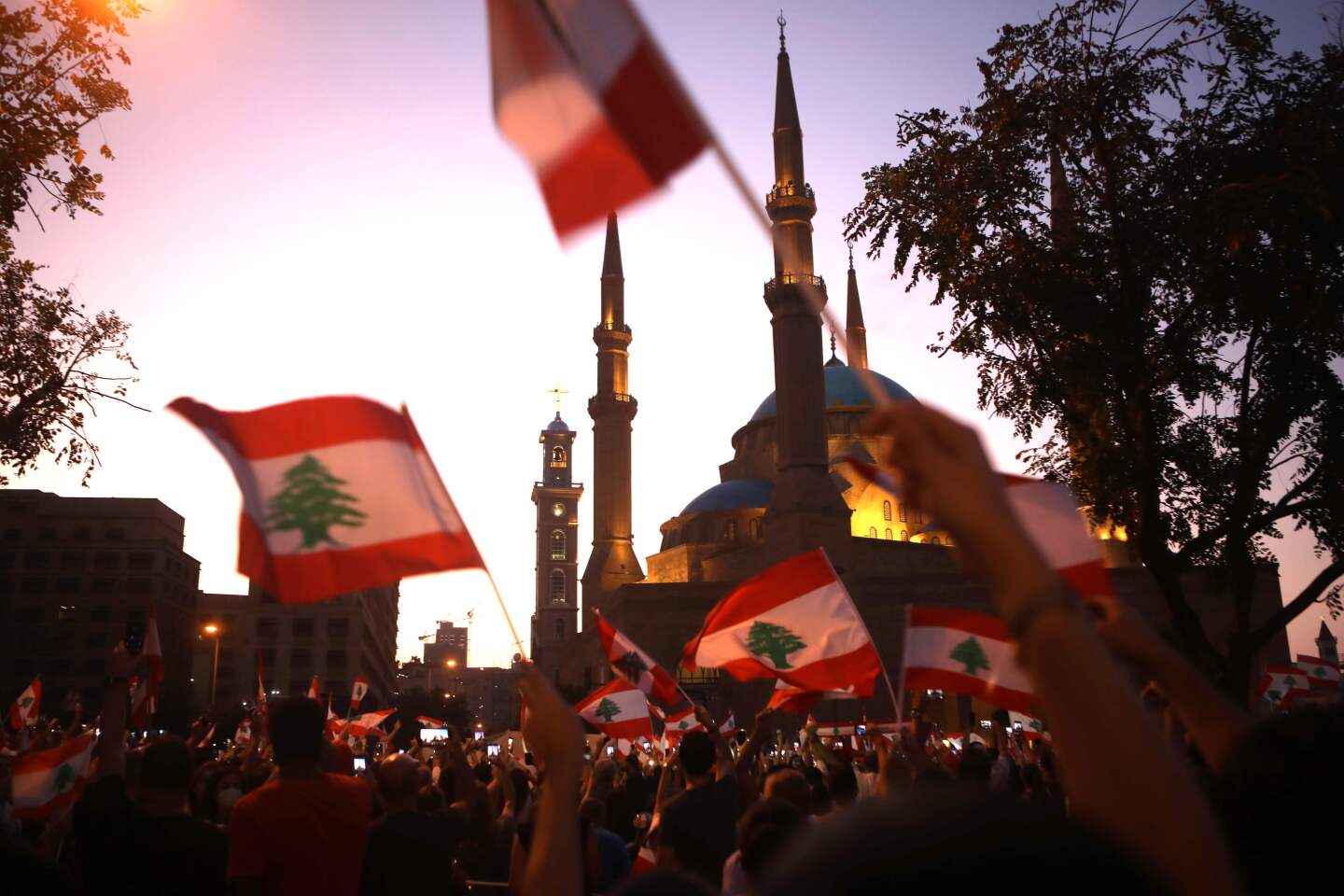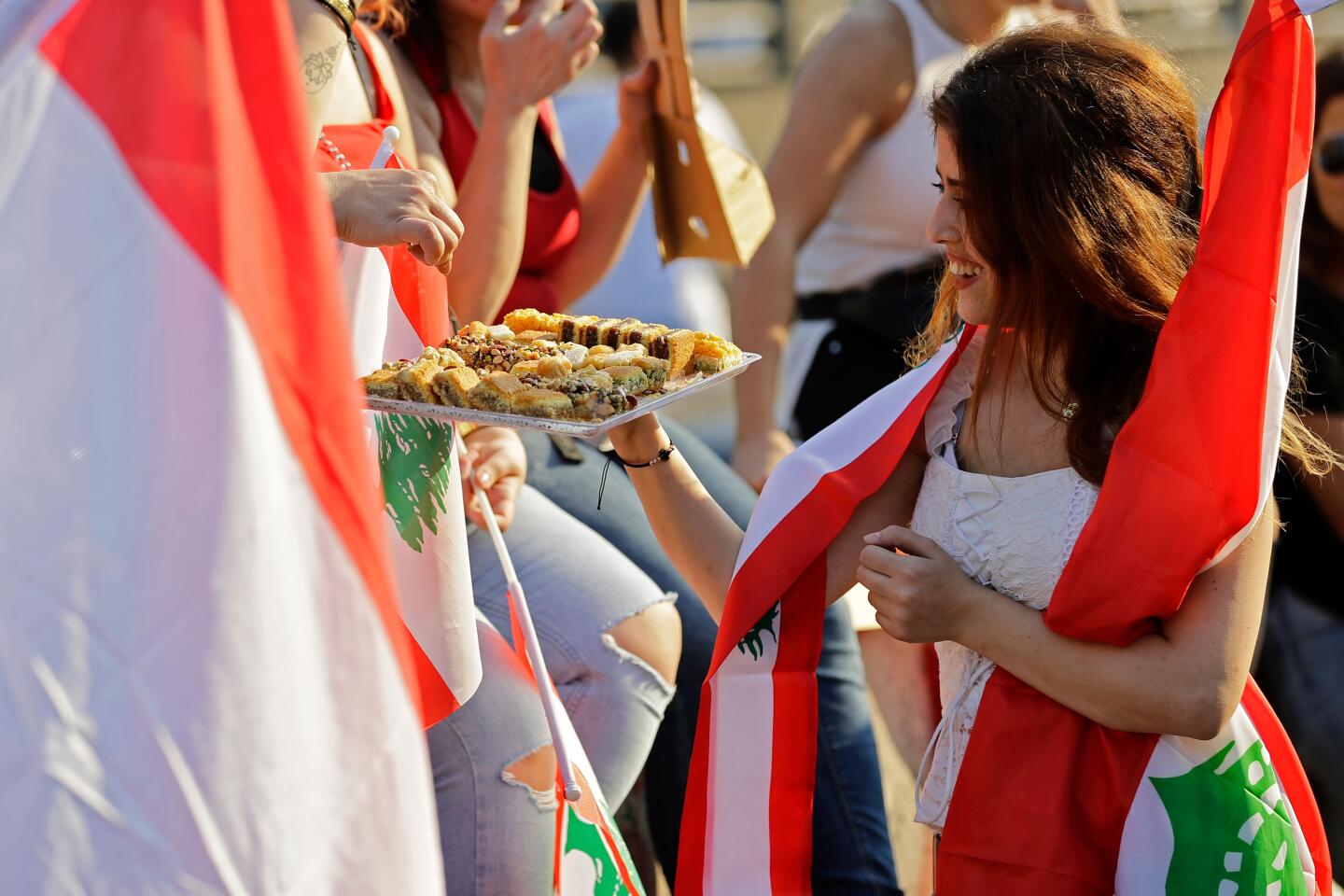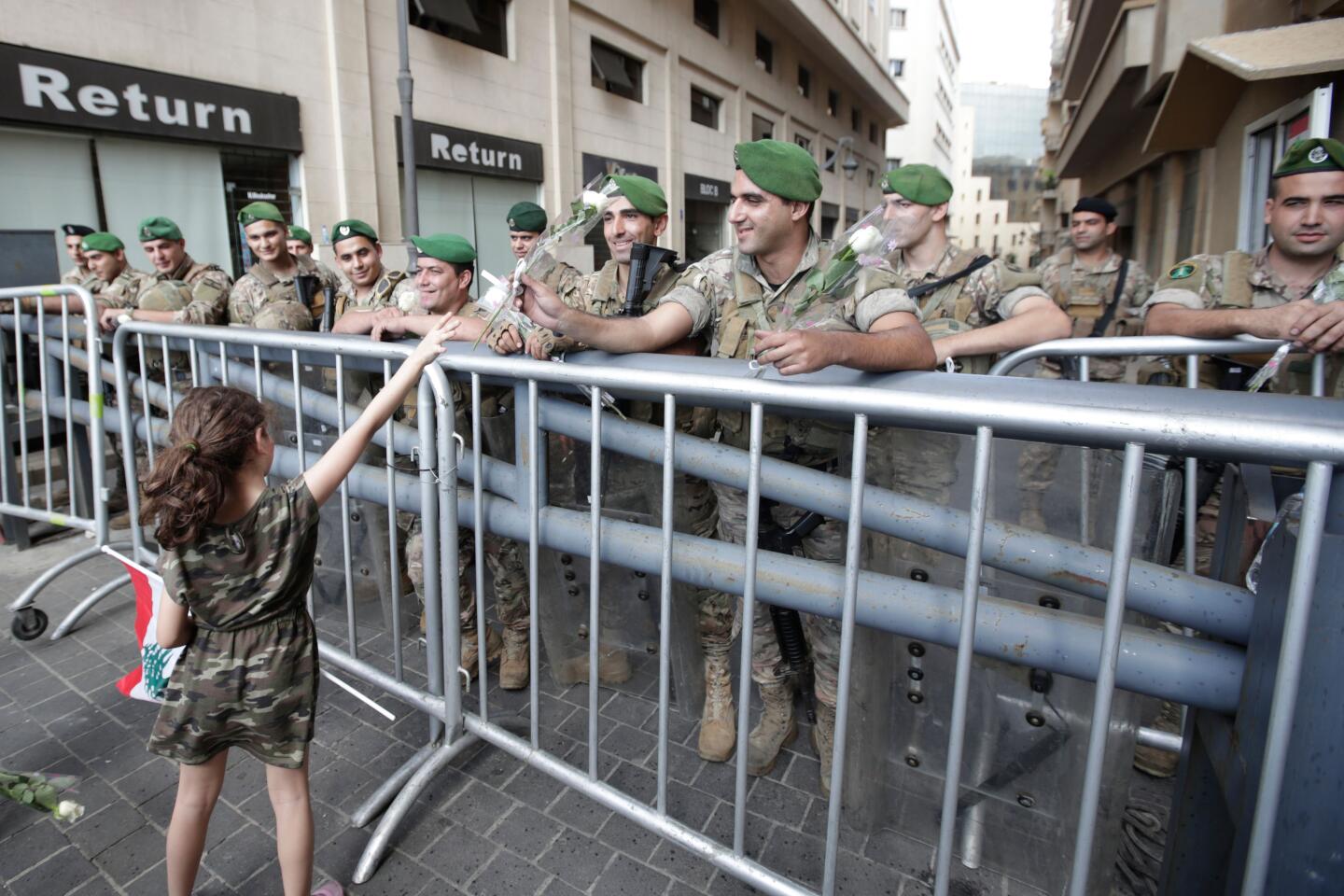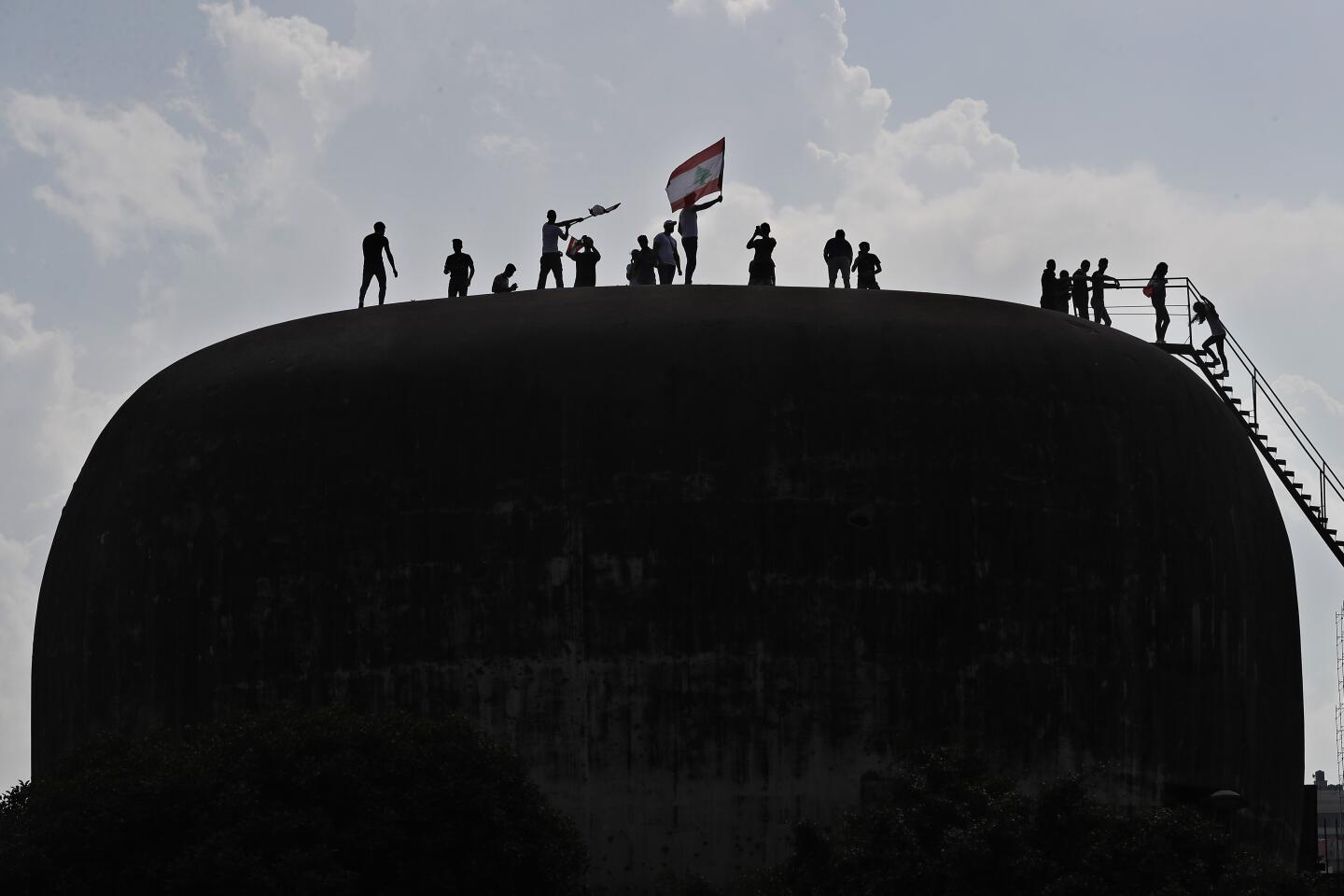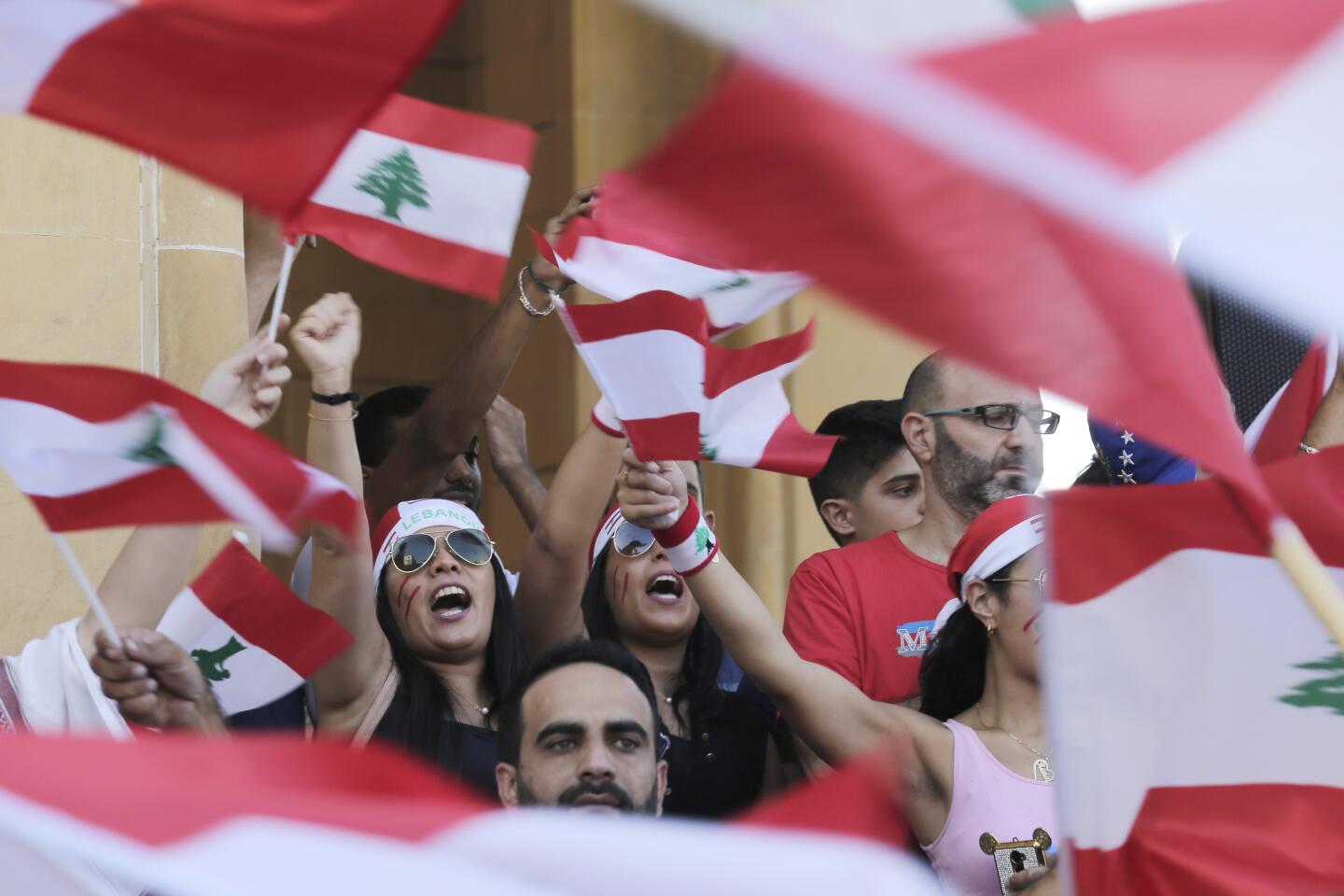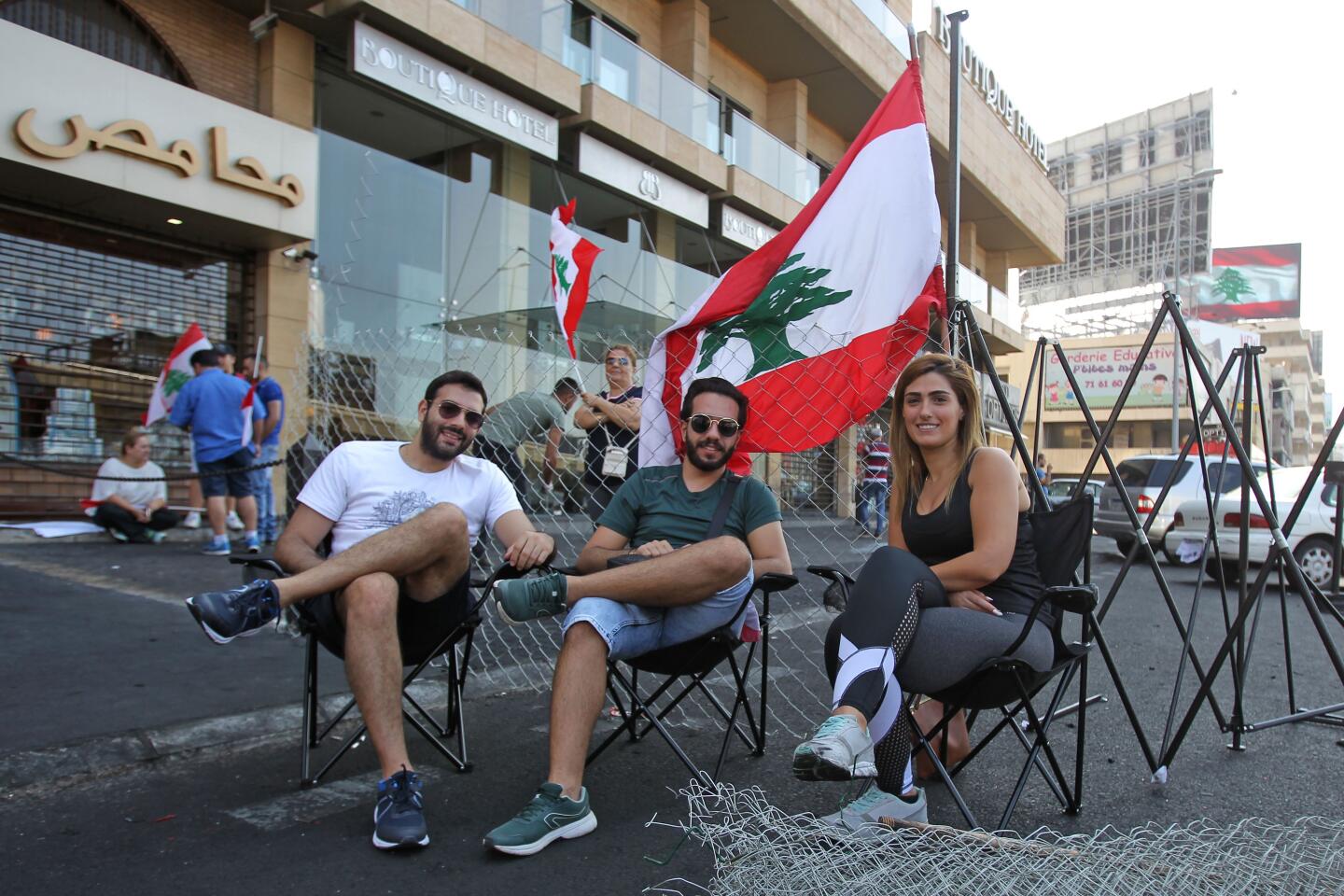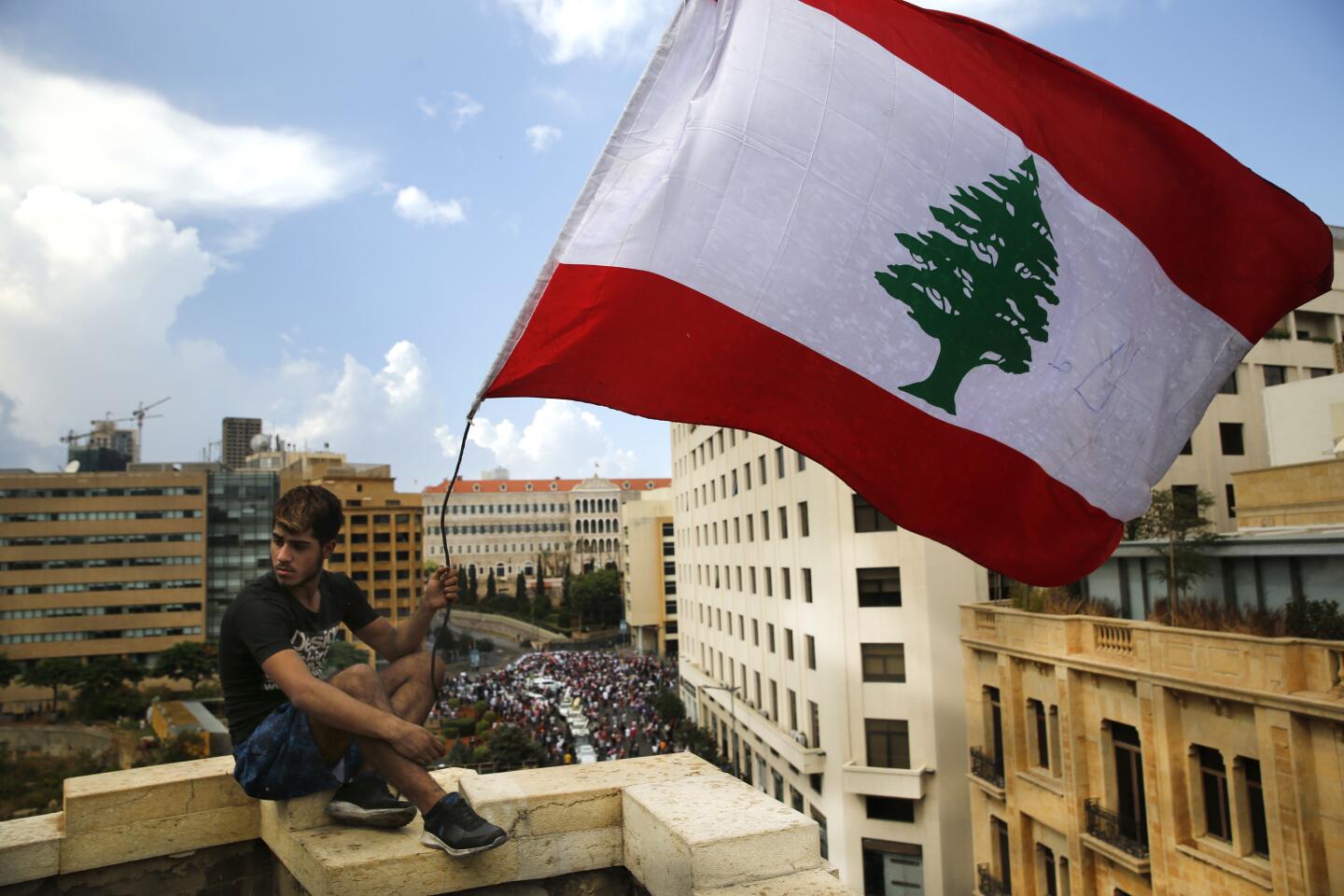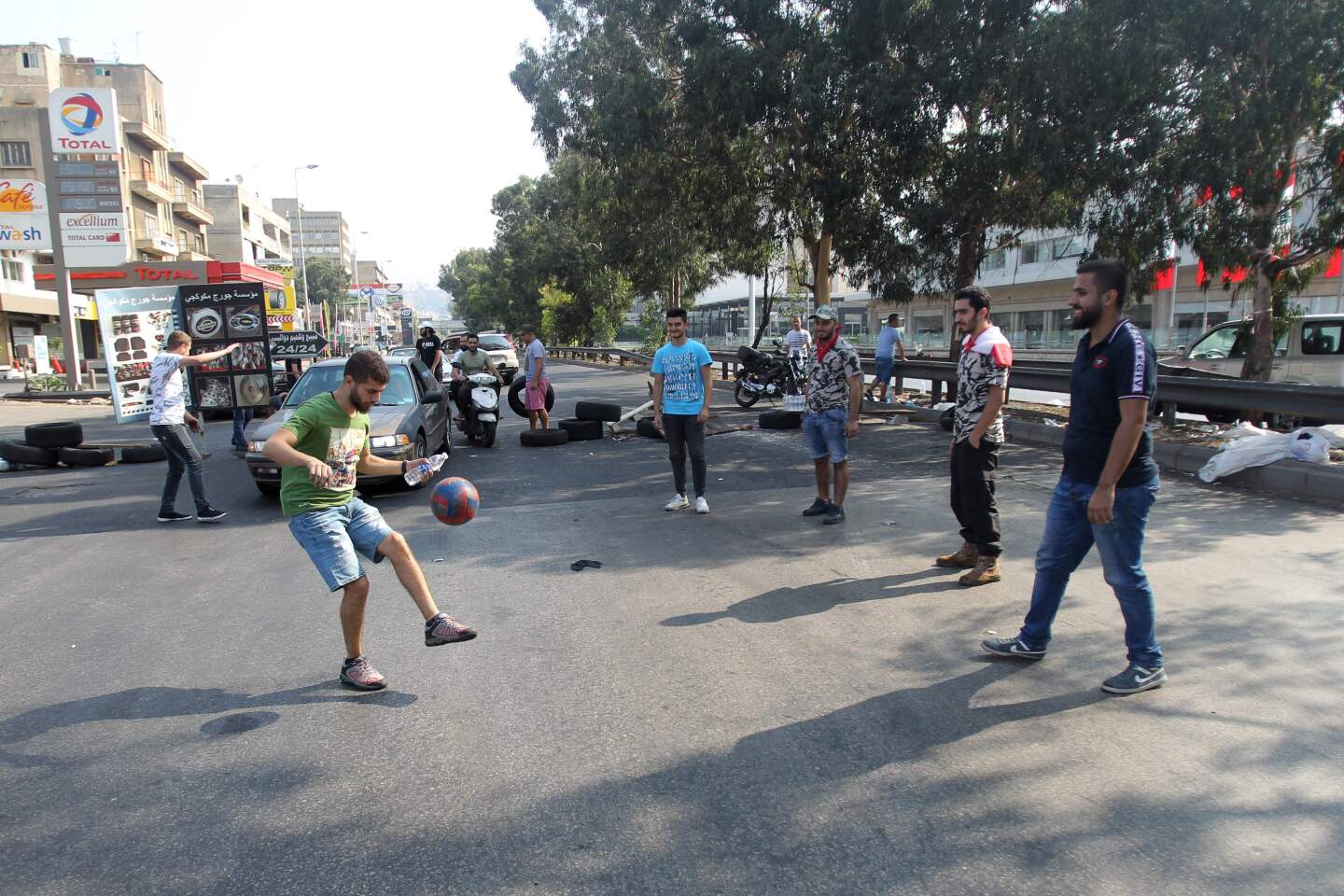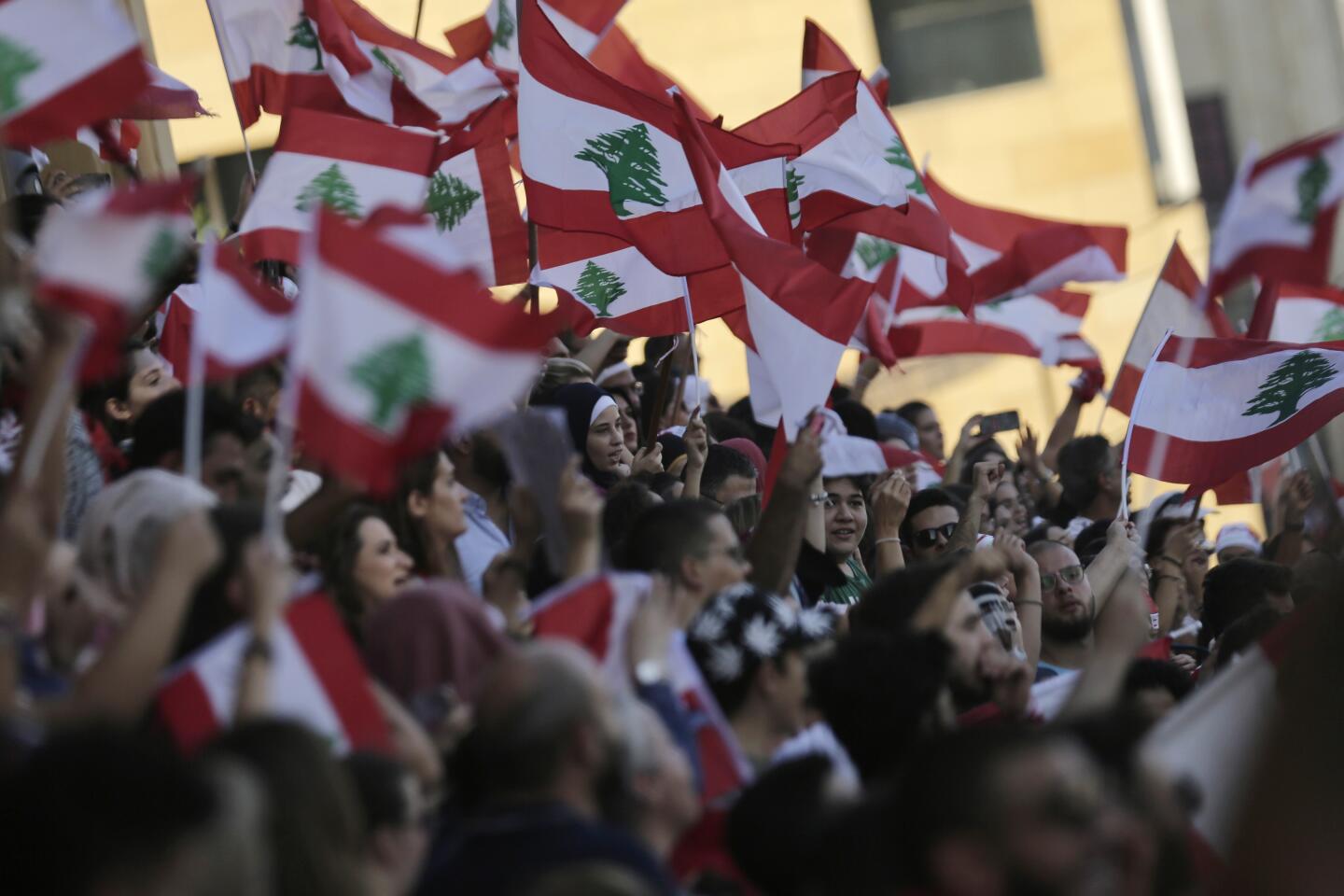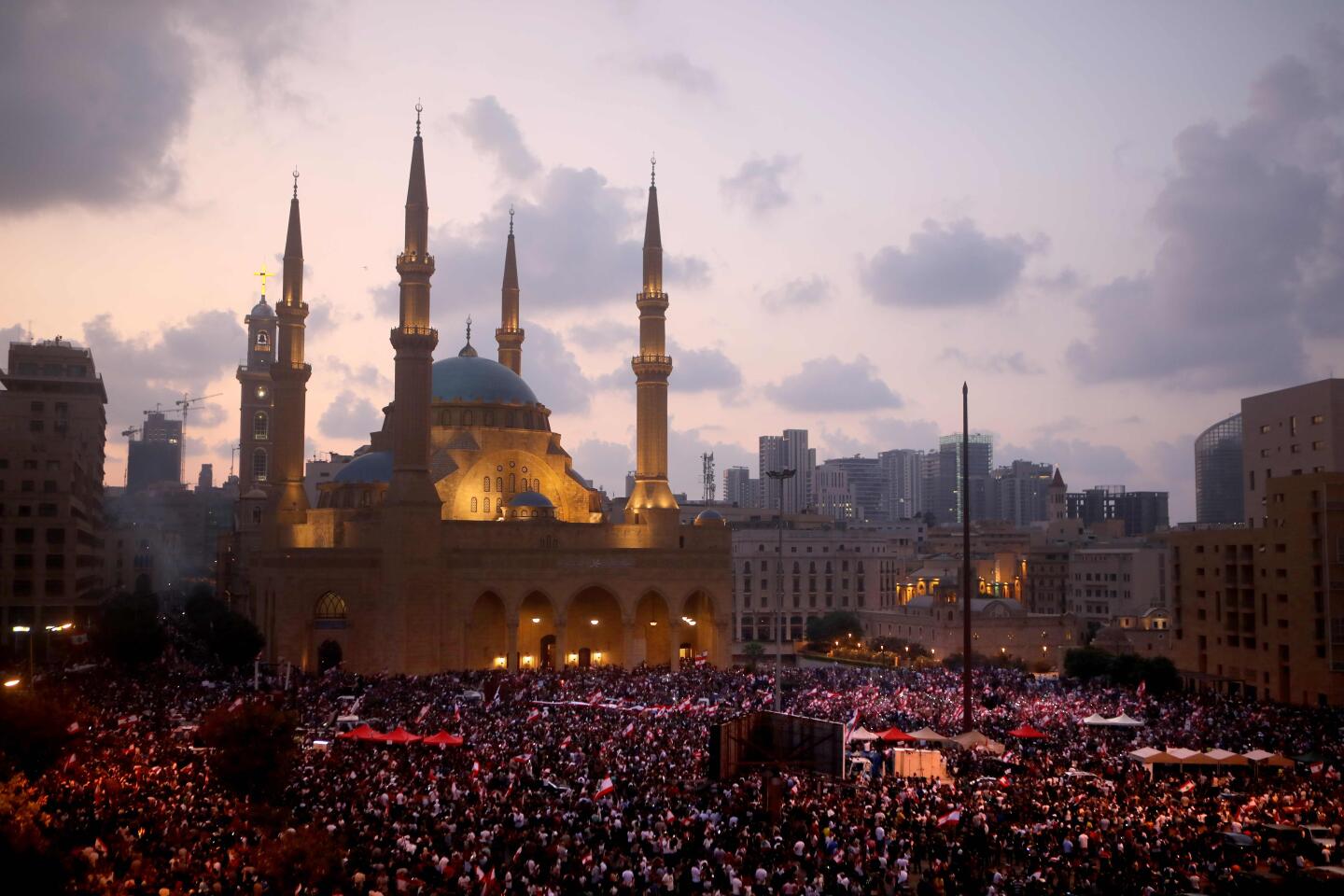Their city lacks public spaces for protests, so Beirut residents made their own
- Share via
BEIRUT — Amid the largest anti-government protests Beirut has ever seen, something unusual has been unfolding in the city’s downtown.
The center of Lebanon’s largest city sorely lacks public spaces — largely because of the legacy of its civil war and the uncontrolled real estate investment that followed.
But after recent mass demonstrations that paralyzed central Beirut as well as other cities throughout the country, residents have not only taken to the streets to air their displeasure with government corruption and proposed new taxes, but also have established makeshift public spaces. They gather to socialize on downtown sidewalks, parking lots and rare spots of grass, as well as in long-shuttered buildings, on rooftops and in other unconventional spots.
In the days since the protests began Thursday night, people have been seen meandering through the streets of downtown, often with their children in tow, Lebanese flags in hand, eating corn on the cob and kaak, a thin, bagel-like bread, purchased from the food carts that have sprung up in the area for the occasion.
In what is normally a parking lot across the street from Martyrs’ Square, people take breaks from marching and chanting to sit on the curbs drinking Nescafe and Arabic coffee, smoking pipes called argileh that they tote with them from home. They listen to the calls of “Revolution!” and “The people want the regime to fall!” — along with a recurring bawdy chant targeted at the country’s foreign minister, Gebran Bassil — occasionally punctuated by music and fireworks.
Zeina Azzam from the town of Zahle in Lebanon’s Bekaa Valley was among a group of demonstrators relaxing with coffee and argileh Sunday across from Martyrs’ Square.
“We are coming here today for the first time, because this downtown is meant only for the rich people,” Azzam said. “Because of this revolution — which is beautiful and hopefully we will get our rights from it — we were able to come and smoke argileh here and sit, the Druze with the Shia and the Sunni, and all of us are comfortable.”
The protests were nominally sparked by a proposal to levy a tax on calls placed through internet services such as WhatsApp. But they represented the culmination of months of building economic anxiety — including fears of a currency devaluation — and frustration with corruption and the country’s gridlocked and sectarian political system. Many of the country’s leaders have been in place since the civil war, which lasted from 1975 to 1990. By Sunday, hundreds of thousands of demonstrators had taken to the streets throughout the country.
Even after Prime Minister Saad Hariri announced a slate of proposed reforms Monday night, including promises not to raise taxes and to slash the salaries of current and former parliament members and ministers by half, protesters remained in the streets, calling for all government leaders to step down and new elections to be held.
In Beirut, a city notoriously fractured and short on public gathering places, downtown streets teemed with demonstrators from all areas, social classes and sects.
Although Azzam was sitting on a sidewalk that technically had always been public space, if little used, others gathered on private properties that had been off limits.
Protesters broke through security fences to stream into some of the few remaining prewar buildings in the area, such as the opulent French Mandate-era Grand Theater, which had been left abandoned and in disrepair after the civil war, and the remains of a former cinema, now known as “The Egg” for its distinctive shape. Demonstrators snapped selfies as they explored the buildings with the eyes of curious tourists and perched on the rooftops for a bird’s-eye view of the crowds.
Maria Hamid Shami of Beirut walked through the eerie concrete shell of the Egg with her three daughters — ages 8, 12 and 15. Unlike some of the other explorers, they did not venture onto the precarious ladder leading to the roof. Shami said she had heard stories about the old cinema from her mother but had never been inside.
Like Azzam, she said she had never considered downtown Beirut as a space meant for the public.
“First of all, you can’t always afford to pay for even just a cup of coffee from inside of one of the restaurants down there,” she said. “You can’t because it will be triple the price of any normal restaurant in another area.”
On top of the Grand Theater, watching the passing crowds below with his fiancee, sister, nieces and nephews, Charbel Hasbani of Beirut recalled that he had been inside the historic building once before: during the 2005 Cedar Revolution protests that drove the Syrian army out of Lebanon after the assassination of former Prime Minister Rafik Hariri.
But Hasbani said the new protests felt different from those: “This is the first time in Lebanon that all the people come as a united front.”
During the 15-year civil war, sections of the city housing different political and sectarian groups were segregated by design. Much of the formerly vibrant downtown area, which lies close to the demarcation line between East and West Beirut, was destroyed.
In the years after the war, the reconstruction of downtown Beirut was carried out by Solidere, a private company connected to Rafik Hariri, the father of the current embattled prime minister, Saad Hariri.
The new downtown was a pristine collection of upscale shops and condominium buildings, many of the units owned by real estate investors and sitting vacant. A survey of buildings constructed in Beirut in the last two decades, conducted by researchers at the American University of Beirut, found that 25% of apartments built after 1996 were empty.
After the postwar construction boom, “land has become a commodity — it has become more and more expensive,” said Dounia Salame, a researcher with AUB’s Beirut Urban Lab program. “This means that there are less and less spaces where people can actually hang out, meet, talk, and just be.”
One byproduct of the land premium is the city’s lack of park space, Salame said. Beirut has less than 11 square feet of green space per capita. The World Health Organization recommends 97 square feet per capita.
As a result of the protests, she said, the Lebanese are “now able to see what kind of public spaces we had, what kind of cultural spaces we had as a city, and I think this is also a great moment to start reimagining radically our city…. And, of course, this is an occasion for people to start talking to each other and meeting across class, age, race, nationality, sect, so it also contains the possibilities for a new kind of urban citizenship.”
Marc Ghazali is a guide who leads weekly tours through downtown in which he talks about the history of its reconstruction and some of the few remaining historic sites. Ghazali said that, during the protests, he had seen that “for the first time since at least 1994, people were going up and down the stairs of these structures as if they were visiting landmarks — and they were.”
Although the old buildings will almost certainly be cordoned off again once the protests end, Ghazali said he had hopes that there would be some lasting effects from the days in which normal boundaries were broken down.
“Comments I heard like, ‘I never felt like I belonged to this place like I do today’ — about Martyrs’ Square — can give hope that people are more aware of the role of public spaces and interactions linked to it,” he said. “To what extent? We will have to wait and see.”
Sewell is a special correspondent.
More to Read
Sign up for Essential California
The most important California stories and recommendations in your inbox every morning.
You may occasionally receive promotional content from the Los Angeles Times.
